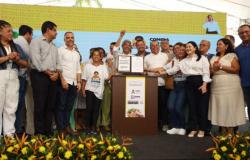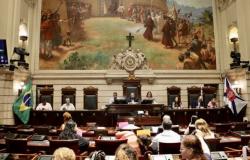This April 2nd, World Autism Awareness Day is celebrated. The date was established by the United Nations (UN) in 2007, and in Acre, the Department of Education, Culture and Sports (SEE), through the Department of Special Education, works on the inclusion and socialization of students.
The date aims to bring knowledge to the population about the disorder and promote the inclusion of everyone in society. According to the head of the department, professor Hadhianne Peres, the participation of people with autism spectrum disorder (ASD) in school activities increases the possibilities for development.
“The participation of these people contributes to the construction of a more inclusive society, which values and respects differences, in addition to ensuring that each individual with autism has the opportunity to enjoy the same rights”, assures the professor.
The school participation of students with autism spectrum disorder is fundamental in education. At the Humberto Soares da Costa School alone, located in the José Augusto neighborhood, there are 71 students enrolled. They complement teaching in the Specialized Educational Service (AEE), coordinated by professor Rosângela Melo.
She explains that they study in class and attend AEE once a week. The space addresses the issue of memory, maintaining focus, social interaction, as well as mathematical calculations. “We use games and work on reading and writing.”
The AEE coordinator also highlights that the school is inclusive and that the specificities of each individual are worked on. “Some need to undergo therapy. They are released and then return to school activities,” she explains.
Regarding the date, Professor Rosângela highlights that it is fundamental because it helps in understanding the spectrum, helping both parents and society itself to identify people with the disorder.
“At the first signs it is necessary to make a diagnosis so that therapies and treatment models can be established and also so that we can promote inclusion. And everyone’s participation in school life is essential, as the first symptoms are often seen by teachers,” he says.
Learn the same way
Among the students with ASD at Humberto Soares school is student Miguel Barbosa da Silva, who is in his second year. He discovered autism when he had epilepsy and highlights that he socializes very well with his colleagues. “We learn the same way,” he says.
Talent for drawing
Another student who has autism spectrum disorder is Laís Lima Galvão, who is in her third year of high school. Her talent for drawing is being investigated by the Center for High Skills/Giftedness Activities (NAAH/S Acre).

His talent was discovered around the age of 8. He has impeccable handwriting and sees himself as a perfectionist. She highlights that she was very well accepted at school, but remembers that she was bullied at other institutions when she was in elementary school.
Teacher Rosângela Melo remembers that Laís had to go to school three times before enrolling. “She is very emotional, has hyperfocus and a very high sensitivity, but here the teachers help a lot”, highlights Rosângela.
Student Pedro Henrique dos Santos Mesquita, in the third year of high school, says that the only school where he did not suffer bullying was Humberto Soares. As for the National High School Exam (Enem), he says he’s not really sure, but he’s thinking about taking Psychology.
“I was bullied because of the language, not because of autism, because I spoke a lot wrong, but I did speech therapy, and today I even present work here at school. I lost my fear of speaking,” she explains.
sports
Student Eduardo Quiroga, in the first year of high school, says that he likes studying and that the school is inclusive and very good. Professor Rosângela explains that he is very receptive. “He talks well with the group and really enjoys watching sports in general,” she highlights.
Under investigation
A case of investigation into autism spectrum disorder that is taking place at Humberto Soares is that of second-year student Withyney Santos. The investigation is being carried out because teachers have identified signs that point to autism.

She, who wants to be a lawyer, considers herself very communicative. The student even works as a Young Protagonist Welcomer (JPA), whose role is to assist management and, mainly, welcome new students.
Self-taught
In addition to student Laís Galvão, another student with autism spectrum disorder who has proven to be a real talent is Daniel Facini, in third year. Very focused on what he wants, he says he is going to take the Enem and that he intends to work with Information Technology (IT). “I really like computers and online games,” he said.
Professor Rosângela, who accompanies the student, says that in addition to being very focused, he is also self-taught. She remembers that during the pandemic he took his activities home, studied and learned everything practically alone. “We gave him the material and he took the test”, explains the teacher.

Professor Antônia Leite, who is the student’s mediator, highlights that he is very intelligent and has great skills in mathematics. “His biggest difficulty is with text interpretation, with long texts, but he interacts very well with teachers and always asks a lot of questions,” she says.
reference Center
To assist the work that schools develop with students who have some disability and students with autism spectrum disorder, SEE is in the process of implementing the Special Education Reference Center (Ceespe), which is being implemented in partnership with the Secretariat of Health (Sesacre).

The head of the Special Education Department at SEE explains that the reference center will be formed by a multidisciplinary team made up of psychologists, speech therapists, psychopedagogues, neuropsychopedagogues and social workers.
“This team will work with a view to writing the life project of students with autism and disabilities, and this work will strengthen the service provided within the school and outline the best intervention strategies for these students”, explained Hadhianne.
Views 52
Tags: World Autism Awareness Day Education highlights inclusion socialization work students
--










